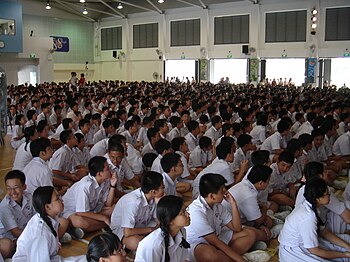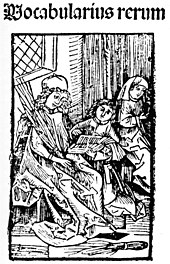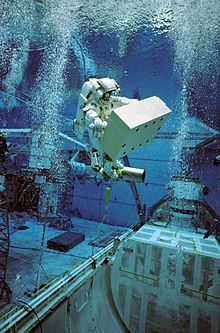
Teaching is the practice implemented by a teacher aimed at transmitting skills (knowledge, know-how, and interpersonal skills) to a learner, a student, or any other audience in the context of an educational institution. Teaching is closely related to learning, the student's activity of appropriating this knowledge.
Teaching is part of the broader concept of education.
Profession
This section is an excerpt from Teacher.
A teacher, also called a schoolteacher or formally an educator, is a person who helps students to acquire knowledge, competence, or virtue, via the practice of teaching.
Informally the role of teacher may be taken on by anyone (e.g. when showing a colleague how to perform a specific task). In some countries, teaching young people of school age may be carried out in an informal setting, such as within the family (homeschooling), rather than in a formal setting such as a school or college. Some other professions may involve a significant amount of teaching (e.g. youth worker, pastor).
In most countries, formal teaching of students is usually carried out by paid professional teachers. This article focuses on those who are employed, as their main role, to teach others in a formal education context, such as at a school or other place of initial formal education or training.Training
This section is an excerpt from Training.
Teaching in non-human animals
Teaching has been considered uniquely human because of mentalistic definitions. Indeed, in psychology, teaching is defined by the intention of the teacher, which is to transmit information and/or behavior and/or skill. This implies the need for the teacher to assess the knowledge state of the potential learner, thus to demonstrate theory of mind abilities. As theory of mind and intentions are difficult (if not impossible) to assess in non-humans, teaching was considered uniquely human. However, if teaching is defined by its function, it is then possible to assess its presence among non-human species. Caro and Hauser suggested a functionalist definition. For a behavior to be labeled as teaching, three criteria must be met :
- The behavior of the "teacher" must be observed only in the presence of a naive individual
- The behavior represents a cost for the teacher, or at least no direct benefit
- The possible consequence of the behavior is a learning gain for the learner
See also
References
- Musial, Manuel; Pradere, Fabienne; Tricot, André (2012). How to design a teaching course. Brussels: De Boeck. ISBN 978-2-8041-6936-7.
- Chessex-Viguet, Christiane (2015). Penser l'école. Paris: L'Harmattan. ISBN 978-2-343-06826-8. OCLC 922630409.
- Ver, Naïl; Paul, Adeline; Malki, Farid (2014). Professeur des écoles: droits, responsabilités, carrière [School teacher: rights, responsibilities, career] (in French). Retz Éditions. ISBN 9782725632520. OCLC 871305750.
- Kline, Michelle Ann (2015). "How to learn about teaching: An evolutionary framework for the study of teaching behavior in humans and other animals". Behavioral and Brain Sciences. 38: e31. doi:10.1017/S0140525X14000090.
- Caro, T.M.; Hauser, M.D. (1992). "Is There Teaching in Nonhuman Animals?". The Quarterly Review of Biology. 67 (2): 151–174. doi:10.1086/417553.
Further reading
- Cordier, Mary Hurlbut (1992). Schoolwomen of the prairies and plains : personal narratives from Iowa, Kansas, and Nebraska, 1860s-1920s (1st ed.). Albuquerque: University of New Mexico Press. ISBN 9780826313843. OCLC 25786967.
- Elsbree, Willard S. (1939). The American Teacher: Evolution of a Profession in a Democracy (1st ed.). New York: American Book Company. ISBN 9780837139210. OCLC 120903.
- Parkerson, Donald H.; Parkerson, Jo Ann (2008). The American Teacher: Foundations of Education. New York: Routledge, Taylor & Francis. ISBN 9780203895122.
- Wyman, Andrea (1997). Rural Women Teachers in the United States: A Sourcebook. Lanham, MD: The Scarecrow Press, Inc. ISBN 9780810831568. OCLC 34321265.